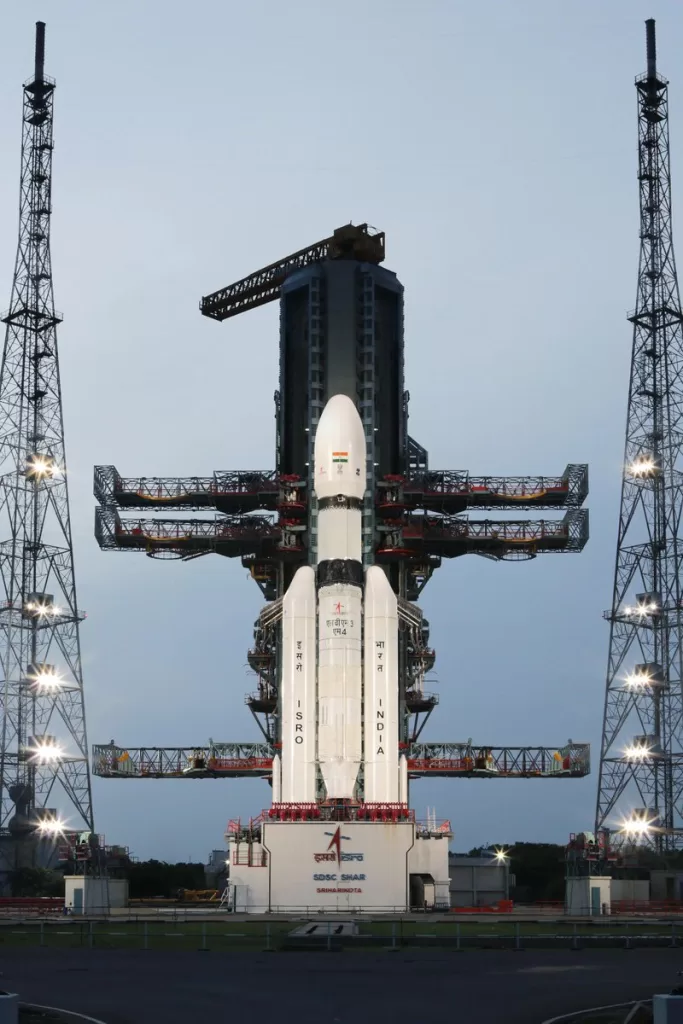Table of Contents
India Marks National Space Day to Celebrate Chandrayaan-3’s Moon Landing
The Indian government has announced that August 23 will be celebrated as National Space Day to commemorate the successful landing of Chandrayaan-3 on the moon. The announcement was made by Union minister Anurag Thakur on Tuesday, after a cabinet meeting.
Thakur congratulated the Indian Space Research Organisation (ISRO) for its efforts in making the mission a success. He said that the achievement was a major milestone in India’s space programme and would inspire future generations of scientists and engineers.
Chandrayaan-3 was launched on July 22 from the Satish Dhawan Space Centre in Sriharikota. The lander, Vikram, touched down on the moon on August 23, after a 55-day journey. However, it lost contact with ground control minutes before it was due to touch down safely.
Despite the setback, the mission was still considered a success by many experts. The lander had successfully entered the moon’s orbit and transmitted data back to Earth. It also deployed a rover, Pragyan, which was able to explore the lunar surface for a short period of time.
The announcement of National Space Day is a fitting tribute to the scientists and engineers at ISRO who made Chandrayaan-3 a reality. It is also a reminder of India’s growing capabilities in the space sector.
In the years to come, India is expected to launch more ambitious space missions, such as a manned mission to the moon. National Space Day will be a day to celebrate these achievements and to inspire young people to pursue careers in science and engineering.
The History of India’s Space Programme
India’s space programme dates back to the early 1960s. The first satellite, Aryabhata, was launched in 1975. Since then, India has launched a number of satellites, including communication satellites, weather satellites, and earth observation satellites.
In 2008, India became the fourth country to successfully soft-land a spacecraft on the moon. The spacecraft, Chandrayaan-1, also carried a rover that explored the lunar surface.
Chandrayaan-2 was launched in 2019. The mission’s goal was to land a lander and rover on the moon’s south pole. However, the lander, Vikram, lost contact with ground control minutes before it was due to touch down. The rover, Pragyan, was still able to explore the lunar surface for a short period of time.
The success of Chandrayaan-3 is a major milestone for India’s space programme. It demonstrates India’s growing capabilities in the space sector and its ability to compete with other spacefaring nations.
The Benefits of Space Exploration
Space exploration has many benefits for humanity. It can help us to learn more about our place in the universe, develop new technologies, and improve our understanding of Earth’s environment.
Space exploration can also help us to develop new technologies that can be used to solve problems on Earth. For example, satellites are used to provide weather forecasting, communication, and navigation services. Space exploration has also led to the development of new materials and medical treatments.
In addition, space exploration can help us to improve our understanding of Earth’s environment. By studying other planets, we can learn more about how Earth’s environment works and how we can protect it.
The Future of India’s Space Programme
India is expected to launch more ambitious space missions in the years to come. These missions could include a manned mission to the moon, a mission to Mars, and a mission to study the solar system.
India is also developing new technologies for space exploration, such as reusable rockets and space telescopes. These technologies will help India to become a leading spacefaring nation.
National Space Day is a day to celebrate India’s achievements in space exploration and to look forward to the future. It is a day to inspire young people to pursue careers in science and engineering and to help them make their own contributions to the exploration of space.
Check Out Offers On Laptops At Amazon.



